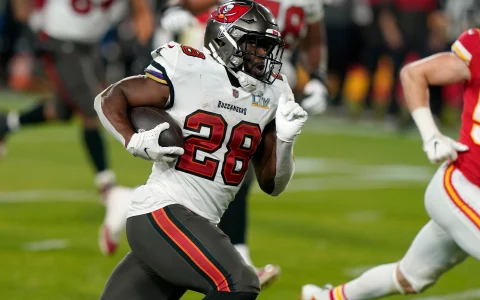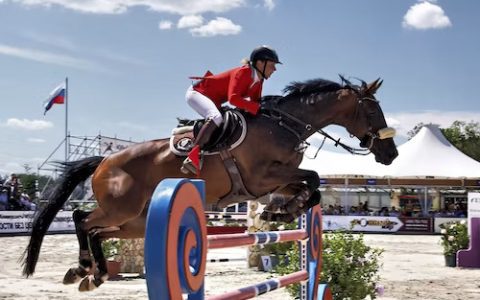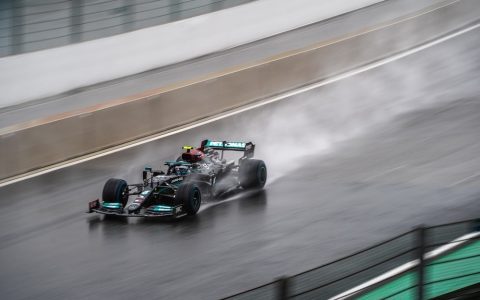
Last year’s heated title fight between Lewis Hamilton and Max Verstappen. dominated the fourth season of ‘drive to survive’, the Netflix series about Formula 1, launched last month. The streaming series has been a hit for the sport, drawing hordes of new fans by highlighting the personalities of the pilots inside the cockpit.
but the onlookers ‘drive to survive’ Going behind the scenes of the championship fight saw a significant absence: Verstappen became the only driver to refuse interviews for the series, as he felt it created false rivalries and exaggerated events. “I’m a down-to-earth guy and I just want facts, no exaggeration,” said Red Bull’s Verstappen. “I understand, of course, it has to be this way for Netflix. But that’s just not my thing.”
Even though Verstappen still appears in the series with access to Formula 1 footage, the story of his title fight was told through an interview with Christian Horner, the team principal of the Red Bull team. Mercedes’ Hamilton took an active part in the series, giving interviews with Verstappen throughout his fight.
The pilots’ rivalry is central to the series’ narrative. An example occurred in season three, an episode starring McLaren drivers Lando Norris and Carlos Sainz Jr. Though they are good friends and have done a good job in the team, this episode tried to portray a lot of tension. Sainz felt that the series was “pushing the envelope a bit”.
“I think there was rivalry, but it was in a friendly way, and maybe they portrayed it in a slightly less friendly way,” McLaren Racing chief executive Zack Brown said in an interview. “Deep down, there was rivalry, but outwardly they never showed anything.”
Norris said that editing the series “may give the impression that you have said something at a certain time and in a certain place that is definitely not the real thing”, but added that unless the truth is completely distorted. Until then, they don’t see a problem.
“As long as they don’t go overboard and literally make someone look like they’ve done something they definitely haven’t, that’s fine,” he said.
Verstappen was more direct about the way Norris was portrayed, arguing that the series gives the impression that Norris is an asshole.
Formula 1 has spoken with the series’ producers and teams following Verstappen’s complaints. Formula 1’s director of media rights, Ian Holmes, said manufacturers “need to be mindful of their concerns” and it is important that teams and drivers feel comfortable taking part in the series.
But he disagreed with the argument that the series contained fake rivalry. “The notion that certain things are made is that thing,” Holmes said in an interview. “At the end of the day, it’s all authentic. The other thing to remember is that people who walk up and down the paddock are very close to events and can’t take a step back to see the big picture.”
Balancing the authenticity and theatricality of events to captivate audiences is a challenge that is often faced. But Horner, who, along with fellow Mercedes teammate Toto Wolff, suffered heavily with humiliation and personality clashes in season four, said one cannot forget the purpose of ‘Drive to Survive’.
“At the end of the day, it’s a television show,” Horner said. “They take the bits and pieces of the season and turn it into a series. You have to remember that after all, it’s something that entertains people.”
Brown said the producers of ‘Drive to Survive’ go to “the limits” to make sure the series is exciting and delights even the toughest Formula 1 fans.
“The numbers say people like it,” Brown said. “The series is attracting a huge number of people to the sport, and I don’t think they’re presenting it as a pure documentary. They’re bringing Formula 1 to people in an exciting way. A little bit of it.” Creative license, but I have no problem with that.”
With race attendance records in the US and Australia over the past six months, the series is turning new viewers into fans of the sport.
“We are happy to report – and I think our friends at Netflix will be happy to report – that this was once the #1 show in 33 countries around the world,” said Greg Maffei, chief executive of Liberty Media Corporation. Said, who owns Formula 1.
“The audience for the fourth season is already bigger than for the third season. So it’s a huge success.”
Brown first explored how the series helped fuel Formula 1’s popularity when he stayed at the same hotel as the Los Angeles Lakers last year.
“Some fans were asking for autographs and two players turned around and said, ‘Sorry, we’re not signing.’ Formula 1 fans,” he recalled.
“Players looked at him and thought, ‘Who’s this guy?’. Now I can’t walk through the airport unrecognized, and everything because of Netflix.”
Filming for the fifth season is already underway. With the exception of Verstappen, all drivers continue to participate, knowing that the series has done well for Formula 1. , ” said George. Russell from Mercedes. “As long as it has a positive effect on Formula 1, I don’t think it is a problem.”
Sainz, who now races for Ferrari, said Netflix is good for the sport. “It’s a good thing for me, for the F1 brand, and I will still participate if they want me to participate.”
But Verstappen said he would not change his mind. “I’ll probably check it out, see how much it tops out and move on with my life.” / RENATO PRELORENTZOU . translation by



